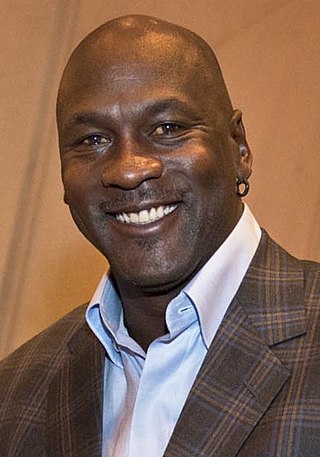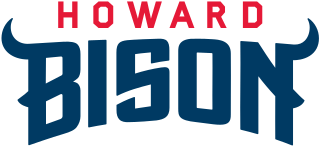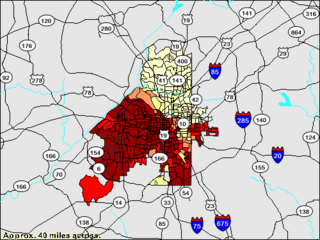
TheUnited Negro College Fund, also known as UNCF, is an American philanthropic organization that funds scholarships for underrepresented students and general operating support for 37 private Historically Black Colleges and Universities (HBCUs). In 1943, Dr. Frederick D. Patterson wrote to The Pittsburgh Courier proposing the creation of an alliance of Black colleges that would raise money for their mutual benefit. UNCF was founded on April 25, 1944, under the leadership of Dr. Patterson, Dr. Mary McLeod Bethune, and others on the belief that there is strength in numbers—that HBCUs ought to make a joint effort to appeal for funds—as well as the belief that education was crucial to Black economic and social mobility. At the start, UNCF served 27 member colleges and universities, totaling 12,000 students. Its first campaign received the support of many prominent Americans including President Franklin D. Roosevelt and John D. Rockefeller, II. During its first annual campaign, the collective effort raised $765,000, equivalent to $10 million today, which is three times what its member institutions had raised separately the previous year.

The Southern Intercollegiate Athletic Conference (SIAC) is a college athletic conference affiliated with the National Collegiate Athletic Association (NCAA) at the Division II level. Formed in 1913, it consists mostly of historically black colleges and universities (HBCUs), with all but one member located in the Southern United States.

Morehouse College is a private historically Black men's liberal arts college in Atlanta, Georgia. Anchored by its main campus of 61 acres (25 ha) near Downtown Atlanta, the college has a variety of residential dorms and academic buildings east of Ashview Heights. Along with Spelman College, Clark Atlanta University, and the Morehouse School of Medicine, the college is a member of the Atlanta University Center consortium. Founded by William Jefferson White in 1867 in response to the liberation of enslaved African-Americans following the American Civil War, Morehouse stressed religious instruction in the Baptist tradition. Growth in the mid-20th century led to strengthened finances, increased enrollment, and more academic competitiveness. The college has played a key role in the development of the civil rights movement and racial equality in the United States.
Historically black colleges and universities (HBCUs) are institutions of higher education in the United States that were established before the Civil Rights Act of 1964 with the intention of primarily serving African Americans. Most of these institutions were founded during the Reconstruction era after the Civil War and are concentrated in the Southern United States. During the period of racial segregation in the United States, the majority of American institutions of higher education served predominantly white students, and disqualified or limited black American enrollment. Later on some universities, either after expanding their inclusion of black people and African Americans into their institutions or gaining the status of minority-serving institution, became Predominantly Black Institutions (PBIs).

Spelman College is a private, historically Black, women's liberal arts college in Atlanta, Georgia. It is a founding member of the Atlanta University Center academic consortium. Founded in 1881 as the Atlanta Baptist Female Seminary, Spelman awarded its first college degrees in 1901 and is the oldest private historically Black liberal arts institution for women.

Clark Atlanta University is a private, Methodist, historically black research university in Atlanta, Georgia. Clark Atlanta is the first Historically Black College or University (HBCU) in the Southern United States. Founded on September 19, 1865 as Atlanta University, it consolidated with Clark College to form Clark Atlanta University in 1988. It is classified among "R2: Doctoral Universities – High research activity".

John Hope, born in Augusta, Georgia, was an American educator and political activist, the first African-descended president of both Morehouse College in 1906 and of Atlanta University in 1929, where he worked to develop graduate programs. Both are historically Black colleges.

The Atlanta University Center Consortium is a collaboration between four historically black colleges and universities (HBCUs) in southwest Atlanta, Georgia: Clark Atlanta University, Spelman College, Morehouse College, and the Morehouse School of Medicine. It is the oldest and largest contiguous consortium of African-American higher education institutions in the United States. The consortium structure allows for students to cross-register at the other institutions in order to attain a broader collegiate experience. They also share the Robert W. Woodruff Library, a dual degree engineering program, and career planning and placement services and the AUC Data Science Initiative.

Audrey Forbes Manley is an American pediatrician and public health administrator. Manley was the first African-American woman appointed as chief resident at Cook County Children's Hospital in Chicago (1962). Manley was the first to achieve the rank of Assistant Surgeon General in 1988 and later served as the eighth president of Spelman College.

Hampton University is a private, historically black, research university in Hampton, Virginia. Founded in 1868 as Hampton Agricultural and Industrial School, it was established by Black and White leaders of the American Missionary Association after the American Civil War to provide education to freedmen. The campus houses the Hampton University Museum, which is the oldest museum of the African diaspora in the United States and the oldest museum in the commonwealth of Virginia. First led by former Union General Samuel Chapman Armstrong, Hampton University's main campus is located on 314 acres in Hampton, Virginia, on the banks of the Hampton River.

Honda Campus All-Star Challenge is a quizbowl academic competition for Historically Black Colleges and Universities (HBCUs). The game was created and co-founded by Richard Reid, president and owner of the College Bowl Company, which produces the program. The sponsor of HCASC is American Honda Motor Company. “HCASC exemplifies the aims of a liberal arts education by encouraging students to develop a mastery in multiple academic fields,” says Dr. Worth K. Hayes of Tuskegee University.

The Atlanta University Center (AUC) Robert W. Woodruff Library is a library in Atlanta which serves the four members of the Atlanta University Center, the world's oldest consortium of historically black colleges and universities and the Interdenominational Theological Center. The library, constructed in 1982, is named for Robert Winship Woodruff, former CEO of the Coca Cola Company. In 2010, the library completed a $16.2 million renovation, partly funded by donations from the Coca Cola Company.

The African-American upper class is a social class that consists of African-American individuals who have high disposable incomes and high net worth. The group includes highly paid white-collar professionals such as academics, engineers, lawyers, accountants, doctors, politicians, business executives, venture capitalists, CEOs, celebrities, entertainers, entrepreneurs and heirs. This social class, sometimes referred to as the black upper class, the black upper middle class or black elite, represents 12% of the total black population in the United States.

The Howard Bison football team represents Howard University in college football at the NCAA Division I Football Championship Subdivision (FCS) level as a member of the Mid-Eastern Athletic Conference (MEAC).
Lonnie C. King Jr. was an American civil rights leader. Beginning in 1960, he launched the Atlanta Student Movement, wrote the Appeal for Human Rights, and subsequently started the Committee on Appeal for Human Rights. His work led to the desegregation of Atlanta and continued advocacy has brought further education to America regarding present-day racism and the struggles of the civil rights movement.
The HBCU Library Alliance is a consortium of libraries at Historically Black Colleges and Universities (HBCUs). Founded in 2002 by deans and directors of libraries at HBCUs, the consortium comprises over 100 member organizations. The alliance specifically represents the organizations included in the White House HBCU Initiative. In 2019 the HBCU Library Alliance entered into a national partnership with the Council on Library and Information Resources.

Black Atlantans form a major population group in the Atlanta metropolitan area, encompassing both those of African-American ancestry as well as those of recent Caribbean or African origin. Atlanta has long been known as a center of black entrepreneurship, higher education, political power and culture; a cradle of the Civil Rights Movement.
Anne Cooke Reid was an American stage director and academic. She founded and led theater departments at historically Black universities including Howard University, where she was the first chairwoman, and Spelman College, where she founded the first Black summer theater in the United States. A prominent figure in theater education, Cooke Reid was known to her students as "Queen Anne"; historian Darlene Clark Hine called her "a major figure responsible for providing high-quality training" during the mid-1900s.

The National Institute of Science (NIS) is a non-profit professional organization with the goal of supporting science education and research at historically Black colleges and universities. The organization is one of the oldest professional groups for Black scientists, and was founded as the National Association of Science Teachers in Negro Colleges and Affiliated Institutions in 1943. It was renamed the National Institute of Science in 1944.














